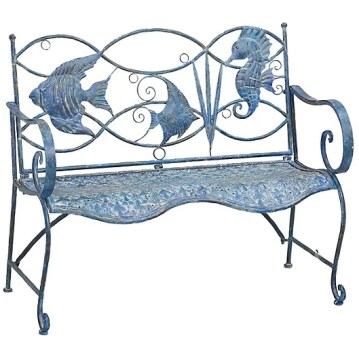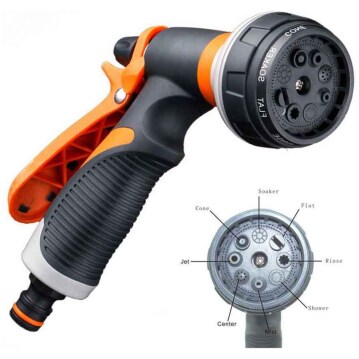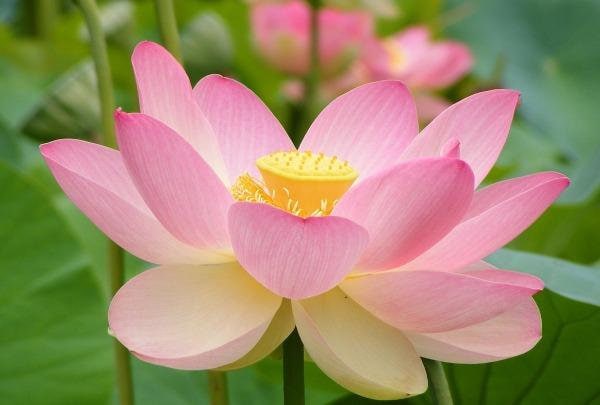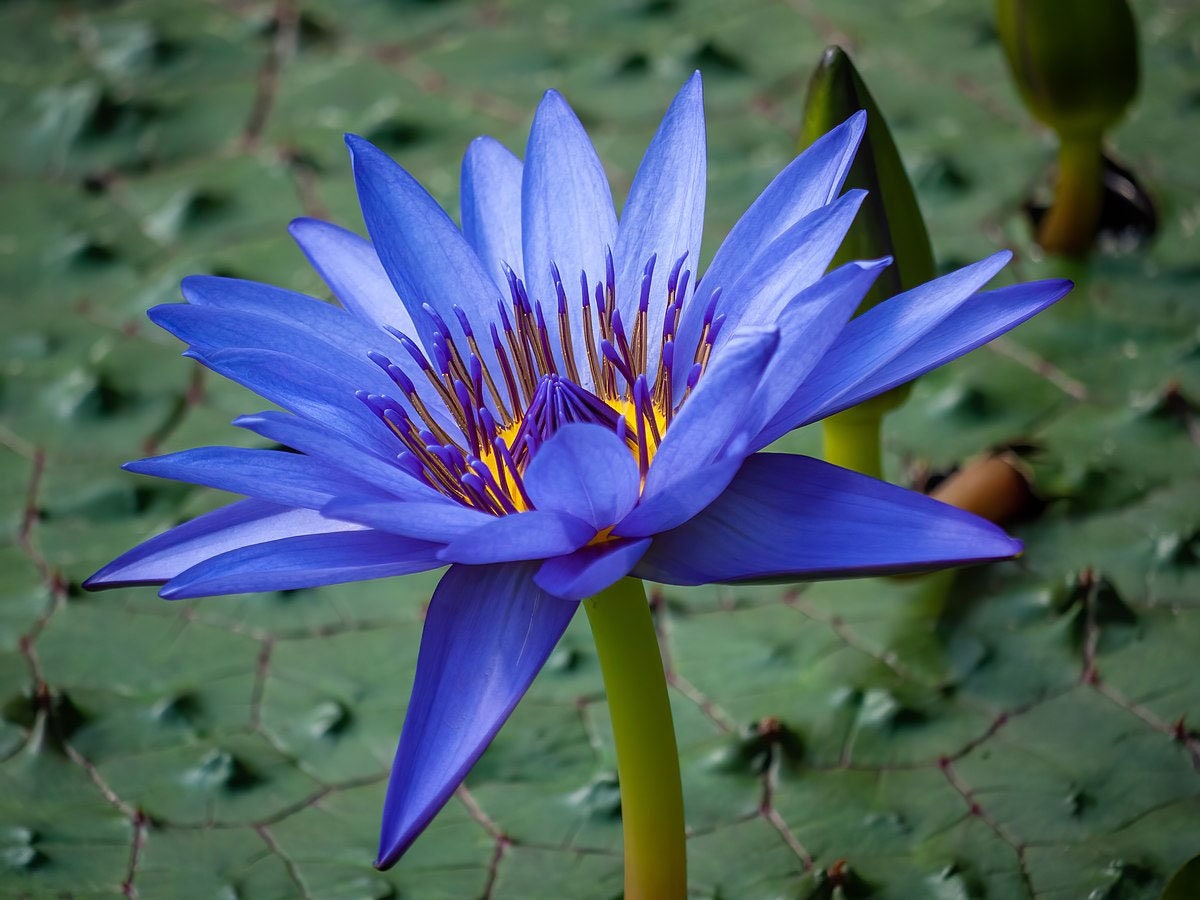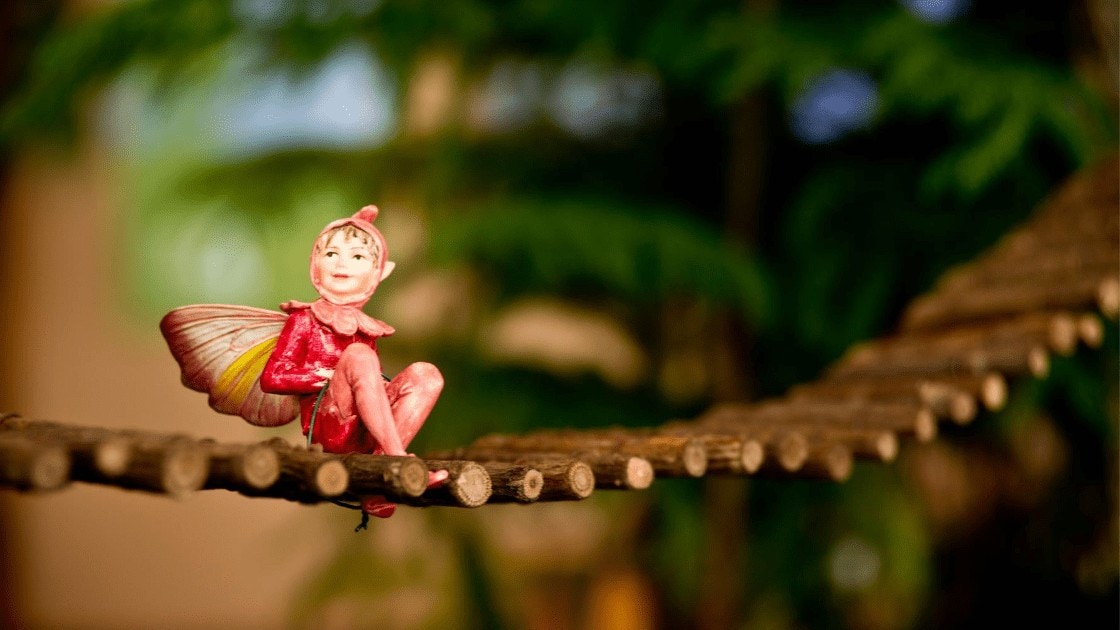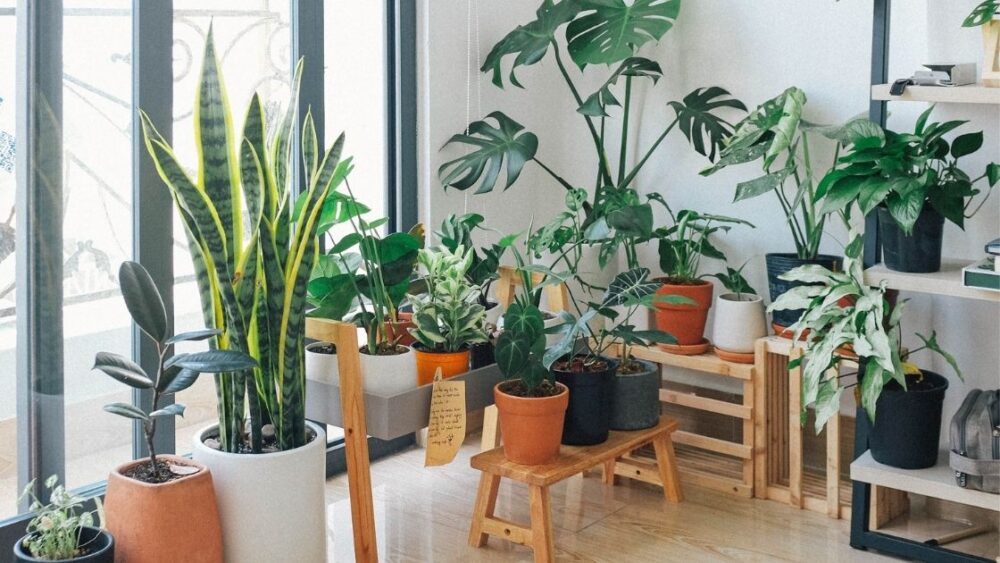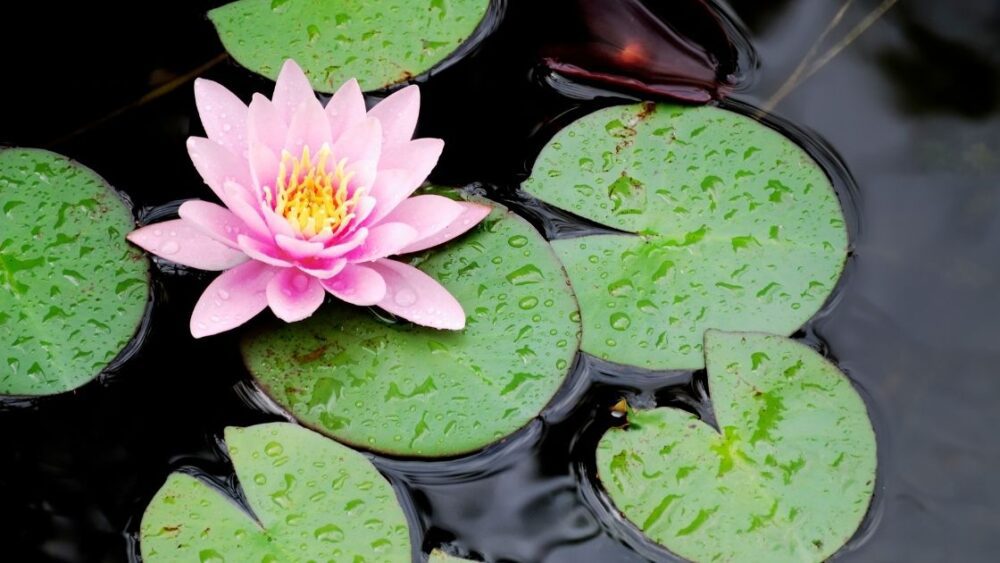
Although Lotus is very easy to care for, rotting, browning and yellowing of the leaves is relatively common. Usually, the affected leaves eventually completely rot away, but sometimes only localized browning is observed which does not spread. In this article we will explore why Lotus leaves turn brown and how to properly care for your lotus plants.
Lotus (Nelumbo nucifera) is an interesting aquatic or semi-aquatic plant, which can be started from tubers as well as from seed. It’s a very versatile plant that is usually planted in large outdoor ponds, but can be successfully grown in tiny containers, even indoors, as long as it receives sufficient light.
Why Are The Leaves of My Lotus Turning Brown?

Most lotus plants have both aerial and floating leaves. Floating leaves are usually the ones that start to go brown and rot, especially if they get submerged by heavy rain. Browning in all leaves is normal during the winter dormancy period and usually starts in the autumn.
Browse our Affiliate Products
Leaf rot, not related to winter dormancy in lotus is very difficult to diagnose – because the floating leaves are in constant contact with the water, any physical damage to the leaf may lead to rotting. Here is a short list of possible causes of browning in lotus plants:
Water Droplets
Water droplets on the surface of the floating leaves can act as a magnifying glass for sunlight, creating tiny holes in the leaves, through which bacteria can get in and kick-start the rotting process.
If the container water contains a significant amount of fertilizer salts, the droplets will evaporate, leaving behind a very concentrated fertilizer solution which will again damage the leaves and cause spot damage, which can eventually progress to leaf rot.
Insect Damage
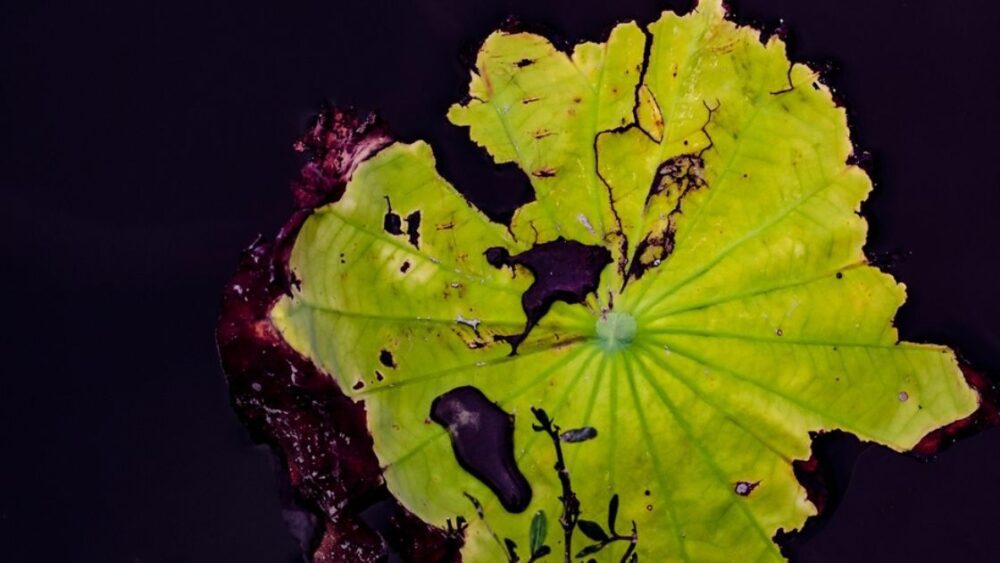
Various aquatic and non-aquatic insects may attack the leaves, again predisposing them to rotting. Usually, as long as the rot affects only a few leaves it is not dangerous to the plant. Most pests start attacking the leaves from the margins. Pesticides should be used with care if there is fish or other aquatic life in the same pond.
Natural Winter Dormancy
Lotus dies back during autumn/winter – this process always starts with browning of the leaves. Eventually, they turn completely brown and rot away. It’s best to not interfere with this process as it happens and let the browning leaves ‘do their thing’. Only cut them off after they’ve completely browned along with the stem.
What to Do for Browning of The Leaves Not Caused By Winter Dormancy
Usually, a few browning leaves are not a cause for concern and the source of the problem is often impossible to pin-point. If the problem is severe, it’s usually best to apply non-specific, blanket solutions to try and stop the browning.
This means if possible, re-potting the Lotus plant in new clay soil with fresh water, moving the container to a spot with more or less sunlight (or using a shade cloth) and experimenting with different fertilizer regiments. Repotting is only recommended if your plant appears to be severely suffering or dying, as the process does carry its own risks is likely to lead to some stem, leaf and root damage as well.
Browning that occurs in spots and spreads out is usually caused by local tissue damage caused by sunlight, water droplets, insects or other causes. Browning that starts evenly from the leaf margins or from the leaf base and steadily progresses may be a cause of greater concern and is more likely caused by improper substrate/water pH, deficiencies, toxicities or poor root health.
If your lotus plant grows in a relatively small container outdoors, try burying the container in the ground. This will greatly reduce the daytime water temperatures and will reduce the temperature swing during the night.
Some people have reported that leaf browning in lotus plants is in fact caused mainly by high water temperatures, but this is anecdotal and hasn’t been confirmed.
Lotus Care Guide and Optimum Growing Conditions
Lotus is easy to care for and can be started from a tuber, as well as from seed. When started from seed, the seeds have to be scarified (intentionally physically damaged) with sandpaper or a knife to allow for easy germination.
Lotus is an aquatic plant that usually grows in large outdoor ponds that also have fish – cultivating it in small containers is relatively uncommon, so the rules for growing it aren’t as well established and confirmed as those for the more commonly grown plant species. Still, enough people have successfully grown Lotus in all sorts of indoor and outdoors containers for us to have a pretty good idea of the optimum growing conditions. For continued reading on water garden, click here to read out article here. 17 Benefits of Having a Water Garden
Does Lotus Grow Better Indoors or Outdoors?
Lotus can be grown in containers as small as half a gallon and as big as thousands of gallons. When grown indoors, the horizontal surface of the floating leaves makes them very easy to illuminate with an artificial LED light. However, indoor growing is practical only for very small containers with a surface diameter of less than a foot, unless you want to invest in a powerful grow light.
If you have any type of garden or an outdoor space, it’s highly recommended that you plant your lotus outside and in a container that is at least 5 gallons. Larger containers have much smaller pH, nutrient salt and temperature fluctuations, which will greatly reduce the chances of something going wrong.
During winter, it’s only important to prevent the tubers from freezing – the upper foliage will die back anyway and this is a natural part of the annual cycle of lotus. Freezing of the tubers during winter can be prevented by moving the container close to your house and using some sort of a transparent cover to form something resembling a greenhouse. For colder zones, the container should be brought back indoors or in a well-sheltered garage.
How Much Sunlight Does It Need?
Lotus grows best in full sunlight, but sometimes spot damage on the leaves may develop, depending on your climate and the type of growing container used. To prevent sun damage, a shade cloth works best, but is often impractical – using a fan to increase the air flow, or removing surrounding wind obstacles may also solve the problem.
Given only indirect sunlight, lotus will usually not grow well and may completely refuse to bloom. Exceptions are very open spaces or spaces with white reflective walls nearby, where the indirect sunlight is very strong, around 20,000 lux.
Feeding/Fertilization
Lotus plants are heavy feeders. The smaller a container you’re using, the more careful you have to be with fertilizer applications. A pen-like, PPM/TDS meter is highly recommended – it’s best to keep the PPM of the water between 100-700 and always below 1000. Very low PPM values below 100 are fine. High water PPMs will stress the plant and may cause the leaf browning which we discussed earlier. They will also make the plant much more susceptible to sun scalding.
Can Lotus Be Grown Without Soil?
You’ll always need some sort of substrate for the roots to attach themselves to on the bottom of the container. This can be clay, gravel or sand.
When it comes to nutrition, a fertilizer can fully replace soil and in fact can work even better, but it has to be the right one. Look for fertilizers that include all six micro-nutrients (B, Fe, Zn, Cu, Mo, Mn). Nutrients created for hydroponics will work. Nutrients for water/aquarium plants that contain all micro-nutrients will also work equally well and are very similar in their composition.
If you choose to go soilless, pay attention to the calcium content of the fertilizers, as most don’t contain any and rely on it being supplied by the natural hardness of the tap water.
Should Lotus Be Transferred to a Bigger Container as It Grows?
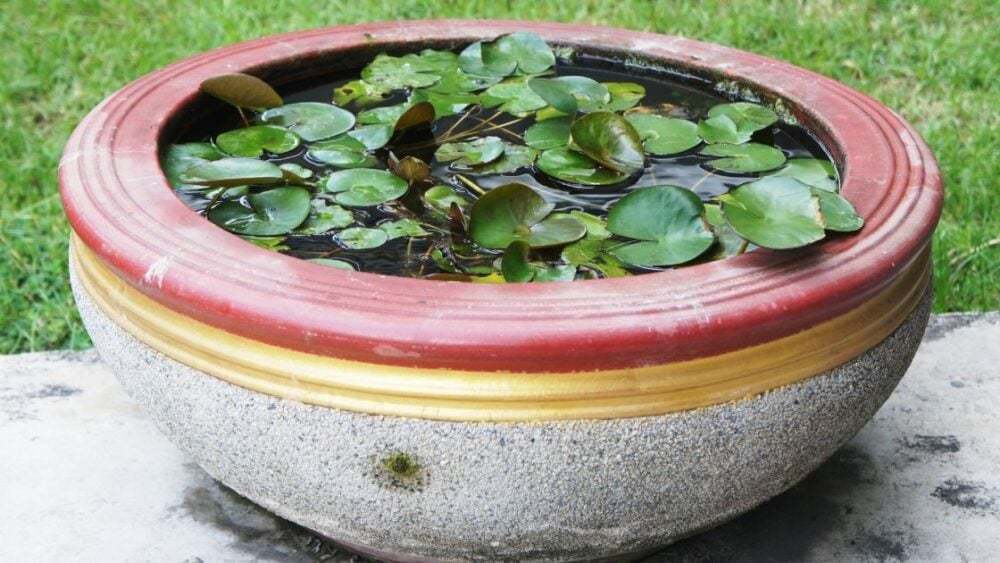
Repotting a growing lotus plant is not practical, because the structure and length it develops depends on the water depth – you can’t easily transfer the plant to a new, deeper container without damaging it.
The plants get naturally limited in size by the depth and size of the container. This is in part caused by the inability of lotus to grow much higher than the water level and by the quick depletion of nutrients in smaller tanks.
What Type of Soil Is Required?
Soil for pond plants should be used. This type of soil may be more difficult to find, but it is available in stores. This soil is heavy in clay and contains a special, loam compost. Gravel or pure sand is often added as a first layer, below the soil layer.
Regular potting soil contains a lot of woody particles that will float. It may also lead to a lot of rotting and bad smells in the water due to having unsuitable microbial composition. This is not a rule and some people have successfully used potting soil for planting lotus.
The pH of potting soil is usually unsuitable and lotus likes much more acidic pH (around 4.5), although this is not true for all species – Asian Lotus varieties can grow in medium pH ranging from 5.5 to 9.
Is Lotus Easy to Care for and Propagate?
Lotus is easy to grow, as long as you have an adequately-lit area (direct sun will be best) and purchase a suitable fertilizer, designed for aquatic plants.
Propagation is also easy and can be done by division, seed or by harvesting and dividing the tuber. Seeds need to be scarified before they can germinate and tubers need to be cut in such a way to always contain an emerging shoot.
Optimum Water Depth and Soil Layer Thickness
A good substrate depth for lotus is around 4 inches. The water level can be between 2 and 20 inches above this layer, but around a foot works best. There is not much benefit to deeper containers and the plants will expend more energy to come up during the spring or after being planted from seed.
Other Common Issues When Caring For Lotus Plants
Because lotus grows in a liquid medium, the effects of over or under-fertilization can be much more apparent. Keep an eye out for yellowing leaves – this can be caused both by nitrogen deficiency and nitrogen toxicity, as well as improper pH.
Plant Not Blooming
Lotus needs a lot of light before it ‘decides’ to initiate blooming. This means direct sunlight for at least 4 hours every day. Deficiencies can also cause poor growth and lack of blooming – the soil mixes designed for pond plants often don’t contain much nutrition, so start using a suitable fertilizer at the first signs of deficiency.
Insect Pests
Lotus is very prone to insect infestations by several species of insects and larvae of insects. Insecticides should be carefully
selected and applied if the lotus lives in a pond occupied by fish or other aquatic life. However, fish usually feed on the insect larvae and largely control the insect problem themselves, so a combination of the two is much less common.
Final Thoughts
Browning leaves in lotus plants are usually a natural phenomenon, observed as the plant prepares for winter dormancy. If not, the browning can be very difficult to diagnose and may be caused by pH problems, toxicities, deficiencies, unsuitable temperatures, sun or insect damage or other mysterious causes.
Some browning of the floating leaves which are constantly in contact with the water is to be expected – the affected leaves shouldn’t be removed unless a large part of their area is affected by the browning.


